Positive Education Books: 18 Best Books for Teachers

This should be every educator’s goal — for their students to reach their full potential — but it is a big ask to expect these character traits to be developed within the already jam-packed school day.
However, with positive education, it is possible.
Positive education fosters decision-making, coping, problem-solving, relaxation, and creative brainstorming skills. It is the ticket to a happy, healthy classroom. To tell you more, we have compiled a list of positive education books to help you begin or continue this journey.
Before you continue, we thought you might like to download our three Positive Psychology Exercises for free. These science-based exercises explore fundamental aspects of positive psychology, including strengths, values, and self-compassion, and will give you the tools to enhance the wellbeing of your clients, students, or employees.
This Article Contains:
3 Best Positive Education Books
For over 10 years, there has been growing evidence that positive education’s school-based interventions result in students’ improved mental health (Waters & Johnstone, 2022).
Factors such as students’ hope, subjective wellbeing, life satisfaction, prosocial behavior, school engagement, and academic grades “have strengthened after receiving positive education interventions” (Waters & Johnstone, 2022, p. 60).
Current research shows the importance of this educational movement (e.g., Safiye et al., 2023; Waters & Johnstone, 2022).
Waters and Johnstone (2022) conducted a case study concerning the use of the SEARCH positive education framework at the Ravenswood School for Girls in Sydney, Australia. This positive education program was recognized as being a cohesive and systematic approach in positive education. This is just one example of a successful positive education implementation.
In a study comprising 823 teachers who completed the Maslach Burnout Inventory-Educators Survey, Safiye et al. (2023) concluded that a high capacity for mentalizing, or understanding your own or others’ mental state, may lessen teachers’ chances of burnout. This self-awareness, which is an element of positive education, could be enhanced by reviewing some of our suggested books.
Below you will find a short list of positive education books that will provide you with actionable strategies for your classroom or school and leave you inspired.
For a quick refresher on what positive education is, please refer to our article What Is Positive Education, and How Can We Apply It?
1. Building Resilience in Children and Teens: Giving Kids Roots and Wings – Kenneth Ginsburg & Martha Jablow
This book offers important insights for parents and educators to support children in developing resilience.
It is particularly suitable for those dealing with children who have experienced adverse life events or trauma.
With useful topics, including coping, managing stress, and strength-based relationships, this book offers powerful advice for educators wishing to understand the factors that can support or stifle a child’s development of resilience.
Find the book on Amazon.
2. How Children Succeed: Grit, Curiosity, and the Hidden Power of Character – Paul Tough
This book draws on research and inspiring stories to answer some of the most fundamental questions about child development and education.
In addition to helping teachers understand why some children succeed while others lose their way, it provides a number of tools to help teachers steer disenfranchised children back on the path to success.
Find the book on Amazon.
3. Positive Learning Environments: Creating and Maintaining Productive Classrooms – John De Nobile, Gordon Lyons, & Michael Arthur-Kelly
Positive Learning Environments draws on positive education principles to help teachers craft learning environments that minimize classroom disruption while encouraging appropriate behaviors.
Each chapter draws on the latest findings in positive education and includes advice on topics like classroom communication, physical spaces, and cognitive-behavioral approaches to addressing disruptive behavior.
Find the book on Amazon or read the e-book for free on Google Books.
2 Best Books for Teachers
Parents yearn for their children to be happy, balanced, kind, healthy, confident, and satisfied.
Teachers are pressured to produce students who achieve, use thinking skills, have self-discipline, and develop literacy and math skills. To have the best of both worlds, positive education is necessary (Seligman et al., 2009).
The following books encourage positive psychology practices in the classroom and could greatly benefit educators.
1. Happy Teachers Change the World: A Guide for Cultivating Mindfulness in Education – Thich Nhat Hanh & Katherine Weare
Cowritten by global spiritual leader Zen Master Thich Nhat Hanh, this book is an authoritative guide to mindfulness in education, spanning the entire range of schools and grade levels.
This book begins by giving educators the essential tools to develop their own mindfulness practice. Working from this base, the guide then walks teachers through step-by-step techniques to apply with students and inspirational stories of mindfulness education used in practice.
Find the book on Amazon.
2. Mindful Teaching and Teaching Mindfulness: A Guide for Anyone Who Teaches Anything – Deborah Schoeberlein & Suki Sheth
This book offers practical approaches to help educators of all kinds tune in to what is happening both inside and around themselves through the practice of mindfulness.
Drawing on the science of mindfulness, this book applies hands-on tools and exercises to empower teachers to deliver education that is attentive, warm, and compassionate to the needs of their students.
Find the book on Amazon.
2 Best Classroom Management Books
Classroom management is one of the most critical components of creating effective learning environments (Bozkuş, 2021).
With proficient classroom management, student participation, safety, and overall wellbeing are preserved. We hope the following books will help you fine-tune your classroom management skills that contribute to positive education.
1. Individualized Supports for Students with Problem Behaviors: Designing Positive Behavior Plans – Linda Bambara & Lee Kern (Editors)
Individualized Supports for Students provides all the information a teacher needs to develop an individualized positive behavior support (PBS) plan for students with persistent behavioral challenges.
The chapters of the book build sequentially on one another, starting with the conceptual underpinnings of the PBS process and ending with steps for evaluating the efficacy of a PBS intervention.
Find the book on Amazon.
2. Positive Strategies for Students with Behavior Problems – Daniel Crimmins, Anne Farrell, Philip Smith, & Alison Bailey
Positive Strategies introduces teachers to the positive strategies method, which helps teachers of K–12 students understand the roots of behavioral problems and encourages students to replace such behaviors with better alternatives.
This book and the strategies explored within may be particularly helpful for students for whom the previous book’s PBS techniques have not worked.
Find the book on Amazon.
Top Educational Books for Teachers
With up to 40% of students having an adverse childhood experience, it is imperative for teachers to be aware of and practice trauma-informed pedagogies (Brunzell et al., 2019).
This is where positive education comes into play. Perhaps the following books could be used in professional development or a schoolwide book study.
1. Positive Academic Leadership: How to Stop Putting Out Fires and Start Making a Difference – Jeffrey Buller
Positive Academic Leadership includes practical guidelines targeted at academic leaders, such as principals, deans, and faculty members.
The advice in this book is drawn from findings in neuroscience, psychology, management, organizational behavior, and a host of other fields.
Its focus is to help academic leaders improve faculty, staff, and students’ morale through changes to their communication, strategic orientation, and perspective.
Find the book on Amazon.
2. Positive Education: The Geelong Grammar School Journey – Jacolyn Norrish
This book follows the inspiring story of an Australian school that radically applied the science of positive psychology to prioritize the welfare and health of its students in the cultivation of a groundbreaking positive education program.
With a foreword from the father of positive psychology, Martin Seligman, the book tells the story of Geelong Grammar School, a hallmark example of positive psychology’s power for bettering the wellbeing of students, teachers, and the broader community.
Find the book on Amazon.
3. Playful Learning: Develop Your Child’s Sense of Joy and Wonder – Mariah Bruehl
Mariah Bruehl gives teachers and parents ideas to design thoughtfully planned learning experiences that tap into children’s natural inclination to play and discover.
All the activities explored throughout the book are hands-on, fun, and easy to implement and draw on positive psychology principles to support the development of cognitive and creative skills for children aged 4–8.
Find the book on Amazon.
Inspirational Books for Teachers
Teaching is hard, and teacher burnout is a genuine problem for many professionals. Burnout is described as psychosocial stress experienced by individuals in high-risk professions.
Believe it or not, teaching is considered a high-risk profession because of the “high impact of occupational risk factors on educators’ mental health” (Safiye et al., 2023, p. 2). We hope the following books will help reignite your passion for teaching.
1. Teaching That Changes Lives: 12 Mindset Tools for Igniting the Love of Learning – Marilee Adams
Marilee Adams created a practical guide for teachers to ignite a “learner mindset” among their students, enabling them to make an authentic difference in their lives.
Following the story of Emma, a sixth-grade teacher on the verge of resigning, this innovative and practical guide applies the principles of positive psychology to help teachers transform their classrooms and inspire their students’ love for learning.
Find the book on Amazon.
2. A Moment for Teachers: Self-Care for Busy Teachers – Alice Langholt
Teachers give their all to their profession and often have very little time for anything else.
This resource is helpful because it could be used as a 30-second daily ritual. If practiced regularly, the strategies in this book could help you gain more presence, patience, confidence, and happiness. You could also share many of these techniques with your students.
Find the book on Amazon.
Other Books Related to Education
If you aren’t already convinced, positive education promotes students’ happiness, wellbeing, and academic achievement (Alam, 2022).
As part of the positive education movement, positive discipline, positive reinforcement, and behavior management are critical elements in the classroom. Please enjoy the following list of books to help you get started with these components.
Positive discipline
Positive discipline is a modern approach that encourages individuals to become mannerly and responsible in their societies (Somayeh et al., 2013). Further, it supports encouragement and mutual respect, which lend themselves well to the positive education movement.
1. Assertive Discipline: Positive Behavior Management for Today’s Classroom – Lee Canter
Lee Canter’s book contains field-tested strategies to support teachers looking to manage classroom behavior better.
Applying a real-time coaching framework, this book will guide teachers to become effective classroom managers, develop a motivating classroom discipline plan, and support challenging students.
Find the book on Amazon.
2. Positive Discipline in the Classroom: Developing Mutual Respect, Cooperation, and Responsibility in Your Classroom – Jane Nelsen and Lynn Lott
This book draws on time-tested research in the field of positive discipline to improve children’s academic outcomes and strengthen trust between students and their educators.
Among the topics explored are respectful communication, solution-oriented approaches to bullying, and strategies to encourage students’ efforts (other than praise or reward).
The fourth edition of this book also has advice to help teachers navigate the new digital distractions that battle for students’ attention in the classroom.
You can buy the book online from Amazon, and if you’re interested, check out the other titles in the Positive Discipline series.
Positive reinforcement
Positive reinforcement is more than just a tangible reward. It could include verbal praise, speaking highly of a child to another adult, extra privileges, fist bumps, or high fives.
Contrary to reactive responses, which could cause teachers to lose hundreds of hours of instruction each year, positive reinforcement is proactive (Wills et al., 2019).
1. How to Raise Disciplined and Happy Children: Mastering the Power of Positive Reinforcement – Jerry Adams
Developed as a quick reference from child psychologist Jerry Adams’s class, this text describes his comprehensive strategy for guiding children to meet expectations and develop the age-appropriate self-discipline necessary for building solid self-esteem, an internal sense of security, and overall happiness.
Although this book is intended for parents, educators could also benefit from these strategies.
Find the book on Amazon.
2. Motivate the Unmotivated – Rob Plevin
If you are finding traditional rewards of stickers, certificates, and reward charts ineffective, you may want to pick up this book.
Also developed from a training program, this book lays out a step-by-step plan to motivate those who are difficult to motivate.
Included in this book are hundreds of actionable strategies you could implement tomorrow, downloadable bonus training materials, and printable resources.
Find the book on Amazon.
Behavior management
Behavior management is critical upon stepping into the classroom. Effective classroom management results in a safe, productive, and effective learning environment and may positively influence teacher retention (Stevenson et al., 2020).
Please refer to these books to accrue additional tools for your behavior management tool belt.
1. Building Positive Behavior Support Systems in Schools: Functional Behavioral Assessment – Deanne Crone, Leanne Hawken, & Robert Horner
This book is a useful blueprint for meeting the challenges of the 1% to 5% of children pre-K–8 who display severe behavioral problems.
Using clearly outlined, step-by-step procedures, this book walks teachers through a functional behavioral assessment.
The process identifies students who need additional support, shows how to design the implementation of behavior support plans, and evaluates these plans’ efficacy.
Find the book on Amazon.
2. Mindfulness in the Classroom: An Evidence-Based Program to Reduce Disruptive Behavior and Increase Academic Engagement – Joshua Felver & Nirbhay Singh
This book provides evidence-based strategies rooted in mindfulness to help educators teach students how to manage emotions and stay on task.
Containing useful supplementary worksheets and handouts, this book does more than reduce disruptive behavior in the classroom. It also seeks to improve the long-term outcomes of students, helping them to reach their potential and thrive well into their adult years.
Find the book on Amazon.
A Selection of Our Positive Psychology Resources
In addition to the excellent selection of books, you might want to delve into a few quick reads to boost your career as an educator.
- A Look at Educational Coaching in the Classroom
- Building Intrinsic Motivation in Students: 29 Classroom Tools
- Applying Positive Psychology in Schools & Education: Your Ultimate Guide
- How to Practice Self-Care: 10+ Worksheets and 12 Ideas
Here is a worksheet that can assist you in your classroom. It guides you in understanding how best to get your classroom’s attention: Classical Conditioning & Your Classroom.
Learning From My Work is another great worksheet that encourages children to evaluate their own performance on homework and projects and thereby learn from their mistakes.
If you’re looking for more science-based ways to help your students enhance their wellbeing, check out this signature collection of 17 validated positive psychology tools. Use them to help others flourish and thrive.
A Take-Home Message
Through the application of positive psychology interventions, positive education has resulted in significant progress toward fostering student wellbeing (Allison et al., 2021; Safiye et al., 2023).
Positive education is so effective because it is not a reactionary approach; it is a preventative approach. Positive education is changing the way we teach and resulting in more positive outcomes. It comes as no surprise how critical positive education is for our children.
Do you have additional positive education resources you’d like to share? Any favorite inspirational teaching books? Feel free to include them in the comments below!
We hope you enjoyed reading this article. Don’t forget to download our three Positive Psychology Exercises for free.
- Alam, A. (2022). Positive psychology goes to school: Conceptualizing students’ happiness in 21st century schools while ‘minding the mind!’ Are we there yet? Evidence-backed, school-based positive psychology interventions. Electrochemical Society Transactions, 107(1), 11199.
- Allison, L., Waters, L., & Kern, M. L. (2021). Flourishing classrooms: Applying a systems-informed approach to positive education. Contemporary School Psychology, 25, 395–405.
- Bozkuş, K. (2021). A systematic review of studies on classroom management from 1980 to 2019. International Electronic Journal of Elementary Education, 13(4).
- Brunzell, T., Stokes, H., & Waters, L. (2019). Shifting teacher practice in trauma-affected classrooms: Practice pedagogy strategies within a trauma-informed positive education model. School Mental Health, 11(3), 600–614.
- Safiye, T., Vukčević, B., Milidrag, A., Dubljanin, J., Gutić Cikotić, A., Dubljanin, D., Lačković, M. , Rodić, I., Nikolić, M., Čolaković, G., Mladenović, T., & Gutić, M. (2023). Relationship between mentalizing and teacher burnout: A cross sectional study. Public Library of Science One, 18(1).
- Seligman, M. E., Ernst, R. M., Gillham, J., Reivich, K., & Linkins, M. (2009). Positive education: Positive psychology and classroom interventions. Oxford Review of Education, 35(3), 293–311.
- Somayeh, G., SayyedMirshah, J., SayyedMostafa, S., & Azizollah, A. (2013). Investigating the effect of positive discipline on the learning process and its achieving strategies with focusing on the students’ abilities. International Journal of Academic Research in Business and Social Sciences, 3(5), 305.
- Stevenson, N. A., VanLone, J., & Barber, B. R. (2020). A commentary on the misalignment of teacher education and the need for classroom behavior management skills. Education and Treatment of Children, 43(4), 393–404.
- Waters, L., & Johnstone, A. (2022). Embedding well-being into school: A case study of positive education before and during COVID-19 lockdowns. Journal of School and Educational Psychology, 2(2), 60–77.
- Wills, H. P., Caldarella, P., Mason, B. A., Lappin, A., & Anderson, D. H. (2019). Improving student behavior in middle schools: Results of a classroom management intervention. Journal of Positive Behavior Interventions, 21(4), 213–227.
Let us know your thoughts
Read other articles by their category
- Body & Brain (42)
- Coaching & Application (54)
- Compassion (26)
- Counseling (50)
- Emotional Intelligence (24)
- Gratitude (18)
- Grief & Bereavement (21)
- Happiness & SWB (39)
- Meaning & Values (25)
- Meditation (20)
- Mindfulness (44)
- Motivation & Goals (43)
- Optimism & Mindset (32)
- Positive CBT (25)
- Positive Communication (20)
- Positive Education (44)
- Positive Emotions (30)
- Positive Leadership (13)
- Positive Psychology (32)
- Positive Workplace (33)
- Productivity (16)
- Relationships (41)
- Resilience & Coping (34)
- Self Awareness (20)
- Self Esteem (36)
- Software & Apps (13)
- Strengths & Virtues (30)
- Stress & Burnout Prevention (33)
- Theory & Books (44)
- Therapy Exercises (35)
- Types of Therapy (58)
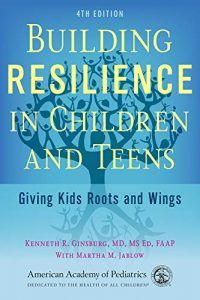
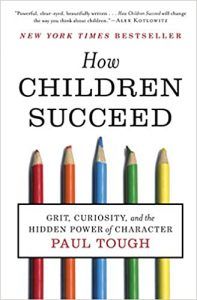
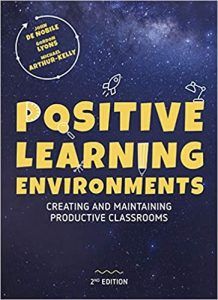
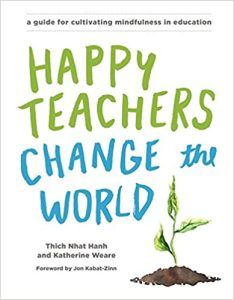
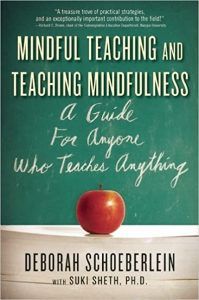
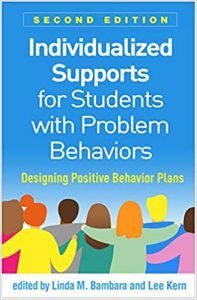
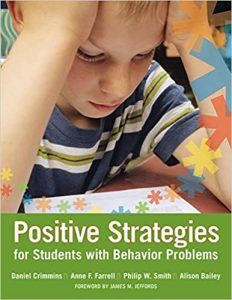
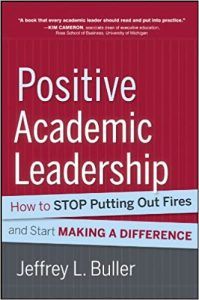
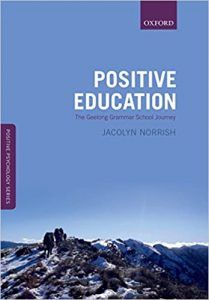
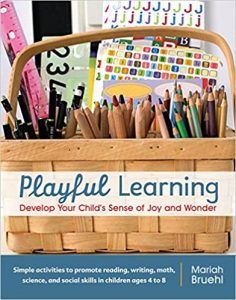


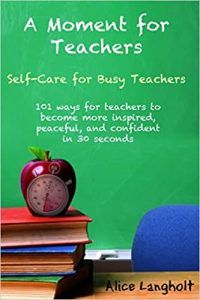

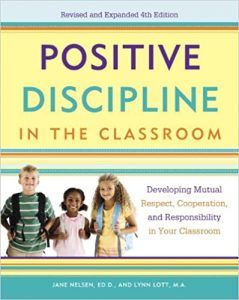
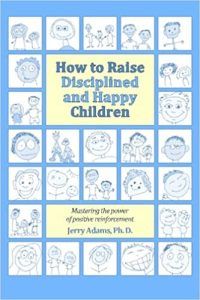
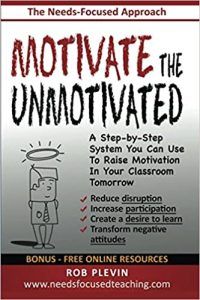





What our readers think
Positive Psychology in SLA (Second Language Acquisition)came out in April 2016. See Amazon for more information. I wrote the chapter on activities in the SLA classroom and have just sent you information about a game I have developed as well.